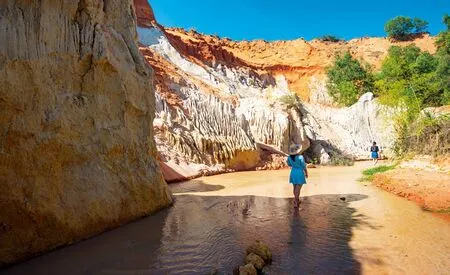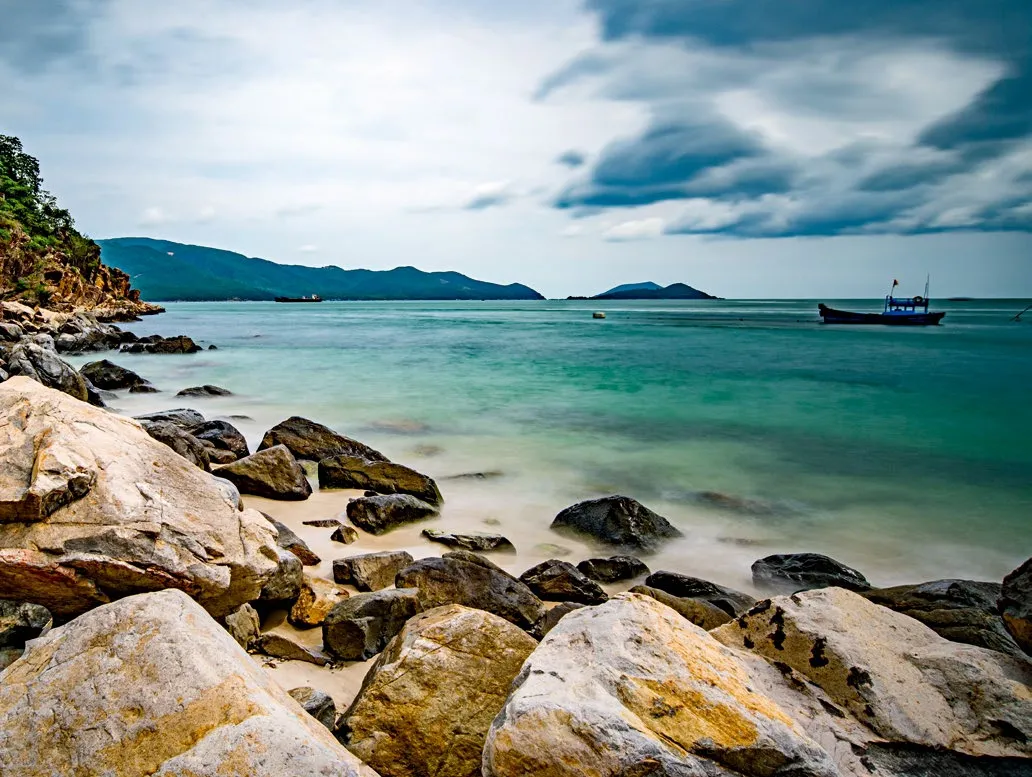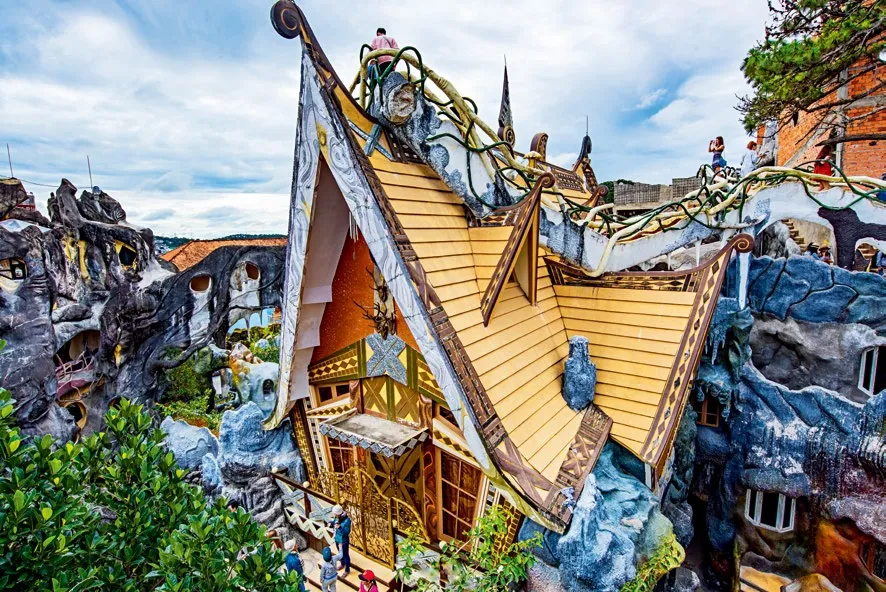Coffee, Kite Boarding And Crazy House
By Liu Li
Coffee, Kite Boarding And Crazy House
By Liu Li
Vietnam's sites, cuisine and culture make it an iconic destination for tourists from all over the world

The Nha Trang Cathedral.
The fi rst time I ever read anything about Vietnam was a travel magazine article about Vietnamese cof f ee. From the article alone, I felt I could almost smell the peace and beauty of one of the world’s most spectacular tropical countries.
The article inspired me, and during the Spring Festival this year, I traveled with a few friends to experience fi rsthand the unique scenery and culture of the country.
Vietnam borders the South China Sea, with a 3,000-kilometer-long coastline and rich tourism resources. The best known scenic spots on the coast are Ha Long, Da Nang, Mui Ne and Nha Trang. On this journey, we traveled to Mui Ne and Nha Trang as our main destinations.
Beauty of Mui Ne
There are a large number of fl ights from China to Vietnam. We chose to fl y from Guangzhou to Ho Chi Min City in southern Vietnam. Upon exiting the airport, we were hit by a tropical heat wave. It took us a while to fi nd our guide in the crowd, and after a few minutes we suddenly found ourselves caught in a torrential downpour.
The next morning, when I pushed open the window, I was delighted by the breeze and the sound of waves from the sea, as well as the stunning white clouds painted across the deep blue sky. Walking along the road that ran parallel to the beach, I watched waves surge onto the shore as motorcycles roared past me.
Mui Ne is a famous resort for kite boarding. I wondered ifformer United States President Barack Obama, who has taken up kite boarding since retiring, knew of this place. Kite boarding requires a license, and only after three days of training can one be acquired. Those of us on the beach, however, could only watch and enjoy the talent of the kite boarders as they navigated the waves before us.
Similar to other tourist cities in Vietnam, Mui Ne has both well-known and more secretive travel routes. At 4:00 a.m. each morning, jeeps depart from hotels fi lled with guests traveling to see the sunrise at the White Sand Dunes, to walk on the sand of the Red Sand Dunes and see the fi shing boats at Mui Ne Harbor. It takes four hours to complete the journey — a stunningly beautiful way to spend one’s morning.
Taste of Nha Trang

The Fairy Stream in Mui Ne.

Picturesque seashore of Nha Trang.

The Crazy House in Da Lat.
After Mui Ne, we traveled by bus to Vietnam’s most popular tourist destination — Nha Trang, which is popular not only with foreign tourists, but also Vietnamese. The city is not very large, and the scenic spots are not far from one another. Along the popular route, we visited the Hon Chong Promontory, Po Nagar Cham Towers, Long Son Pagoda and Nha Trang Cathedral. In the afternoon, we took a mud bath at the Thap Ba Hot Springs.
It was here in Nha Trang that I fi nally got my fi rst taste of the Vietnamese cof f ee that I had read so much about. Traditional Vietnamese cof f ee brands include G7 cof f ee and SAGOCAFE. The cof f ee is not boiled in a traditional cof f eepot but brewed in a modif i ed Vietnamese pot. Ground cof f ee is brewed in an hourglass container with hot water. The brewed cof f ee then falls in drops into a glass. At the bottom of the glass is a layer of sweet condensed milk, which will be mixed with the brewed cof f ee. It takes quite a while for all the cof f ee to drip into the glass, and it is not a surprise that the cof f ee has cooled down as it falls. The bitter cof f ee mixed with rich condensed milk tastes heavenly. On a hot afternoon, a Vietnamese iced cof f ee is an ideal drink, even if it requires some patience.
Nha Trang’s evening was even more enjoyable. All the restaurants along the street were crowded, whether they were fancy eateries or street side stalls, Western style restaurants or grill houses. We had dinner on the 41st fl oor of the Havana Hotel, which allowed us to enjoy a panoramic view of Nha Trang at night. We saw twinkling lights from both near and far, as waves surged onto the beach from the pitch-dark sea.
Crazy House
Our last stop in Vietnam was Da Lat, a French-style summer resort on a plateau about 1,500 meters above sea level. As our bus negotiated the twists and turns of the hills, the temperature dropped further and further, as if traveling from summer back to spring.
The main attraction in Da Lat is the Crazy House. The house was designed by Dang Viet Nga, the daughter of the president of the First Republic of Vietnam. Dang holds a doctorate in architecture from the University of Moscow. She got her inspiration for the project from the Spanish duo of painter Salvador Daly and architect Antoni Gaudí.
The house was not yet open when we arrived. However, there was already a queue of waiting tourists. As we walked up the stairs to see the house, we saw a dif f erent view with each step, which is what makes this spot unique among all the tourist sites in Vietnam. On the roof of the house, we saw white clouds folding and unfolding across the blue sky. We felt as if we were at the center of the world.
In the center of Da Lat lies Xuan Huong Lake. Next to the lake is its night market. After dinner, we went for a walk in the market. As we arrived, we saw a crowded market with people coming in from all directions. We were fascinated by this city with a population of only 120,000, and it felt as if most of the local residents were with us at the market that night.
My fi rst trip to Vietnam lasted only a few days. I left the country with beautiful memories of its bright sunshine, its sea waves and sand, its Crazy House, its cof f ee and its people and culture. I can’t wait to go back.

